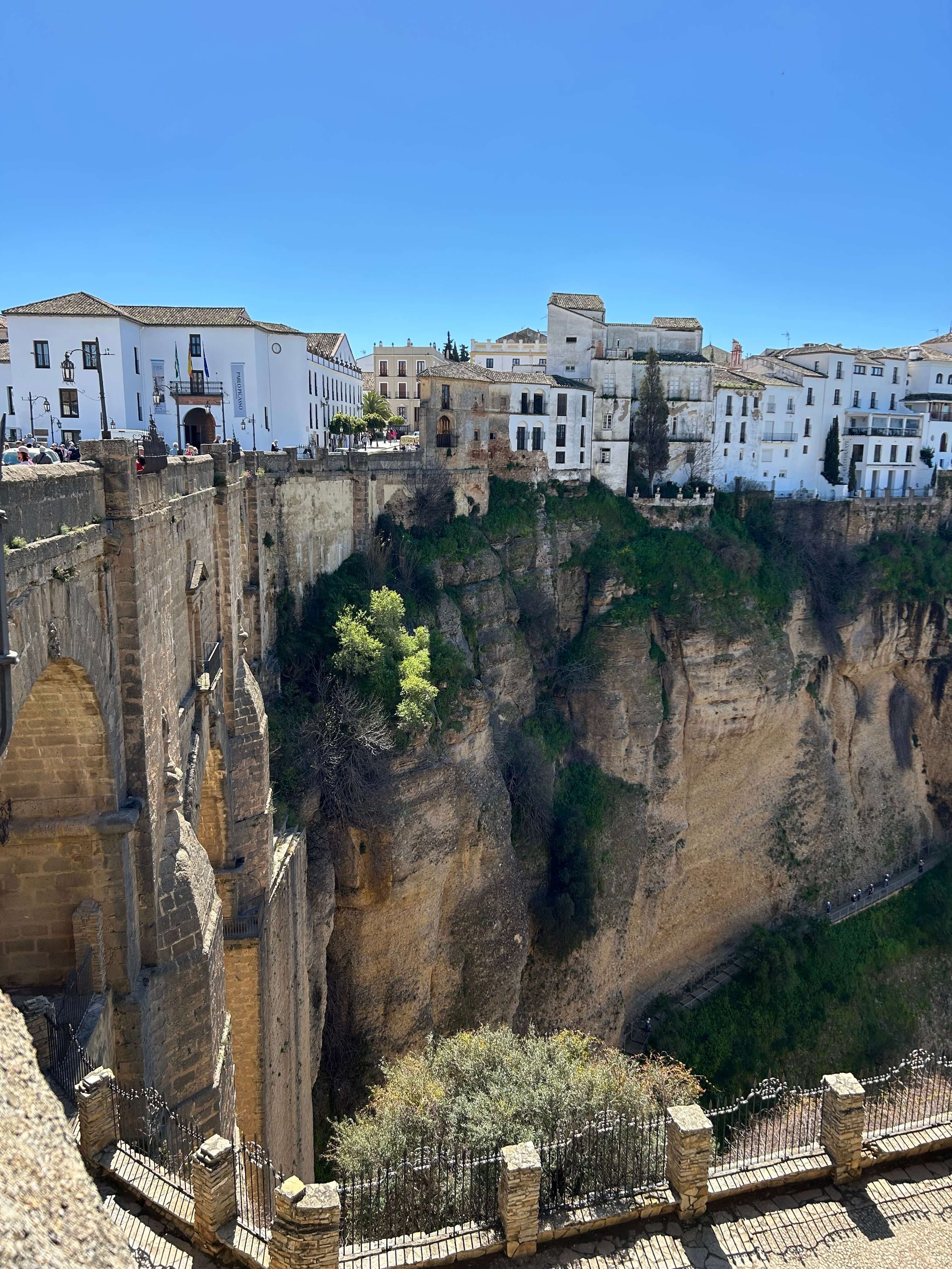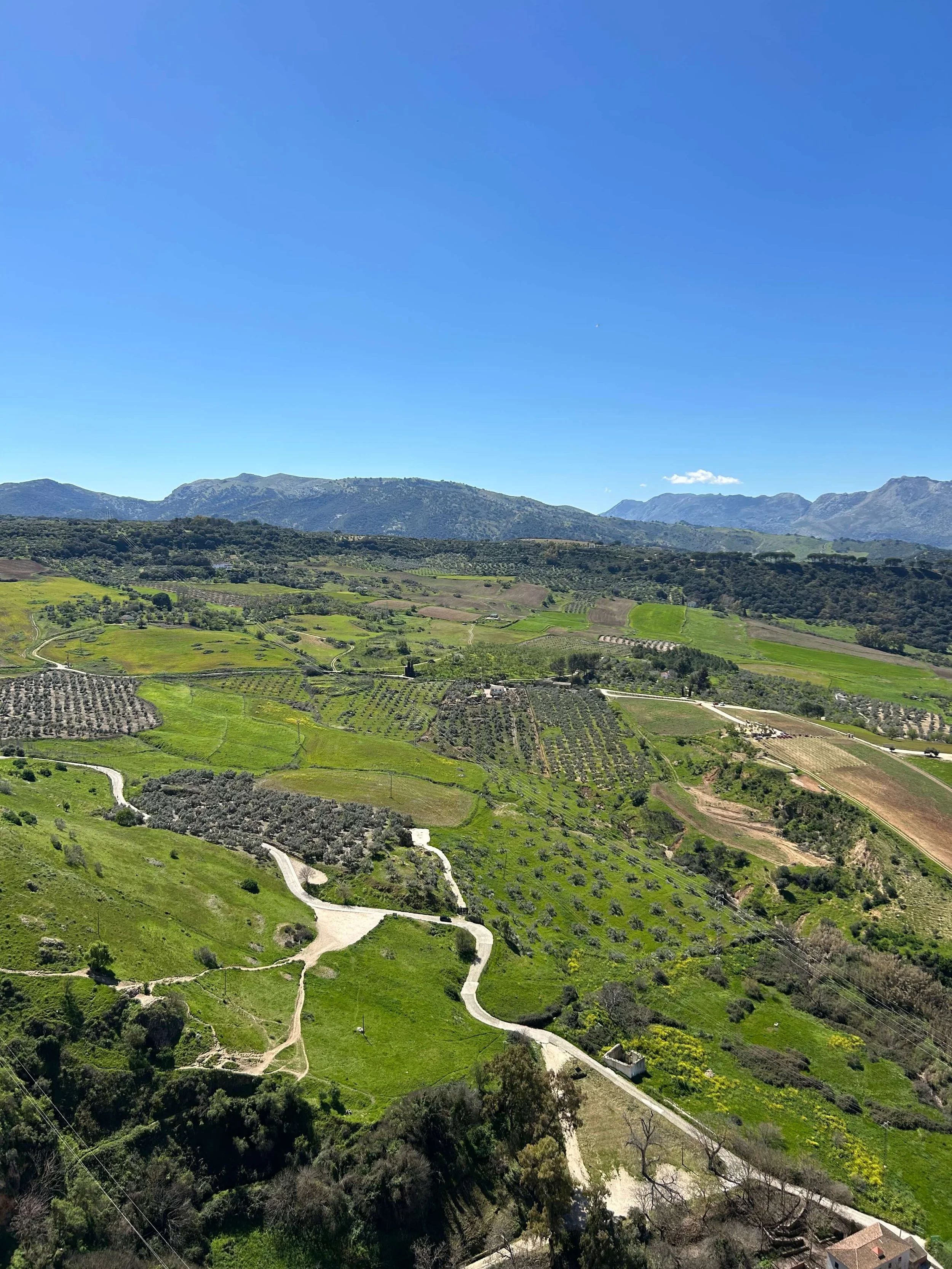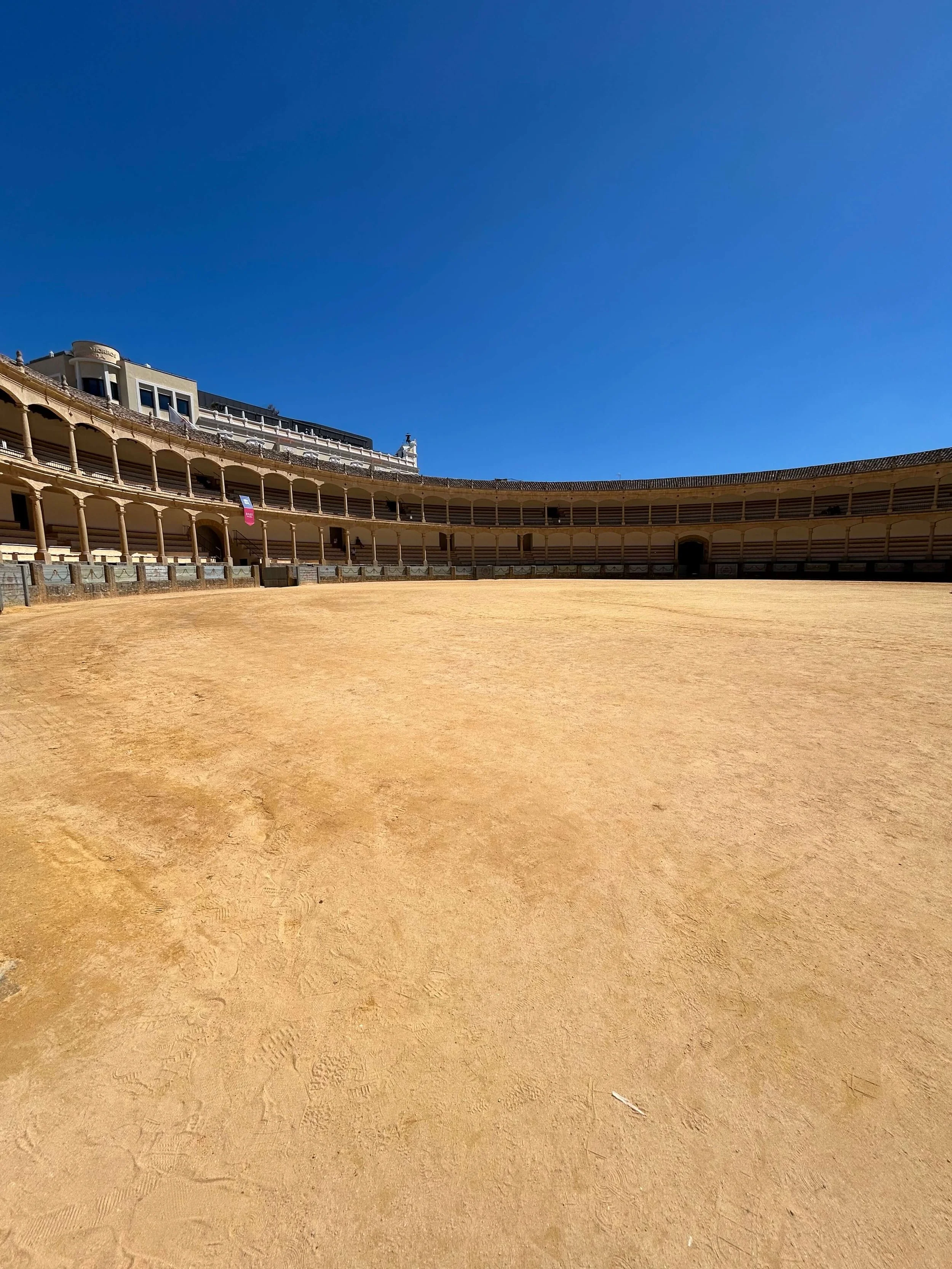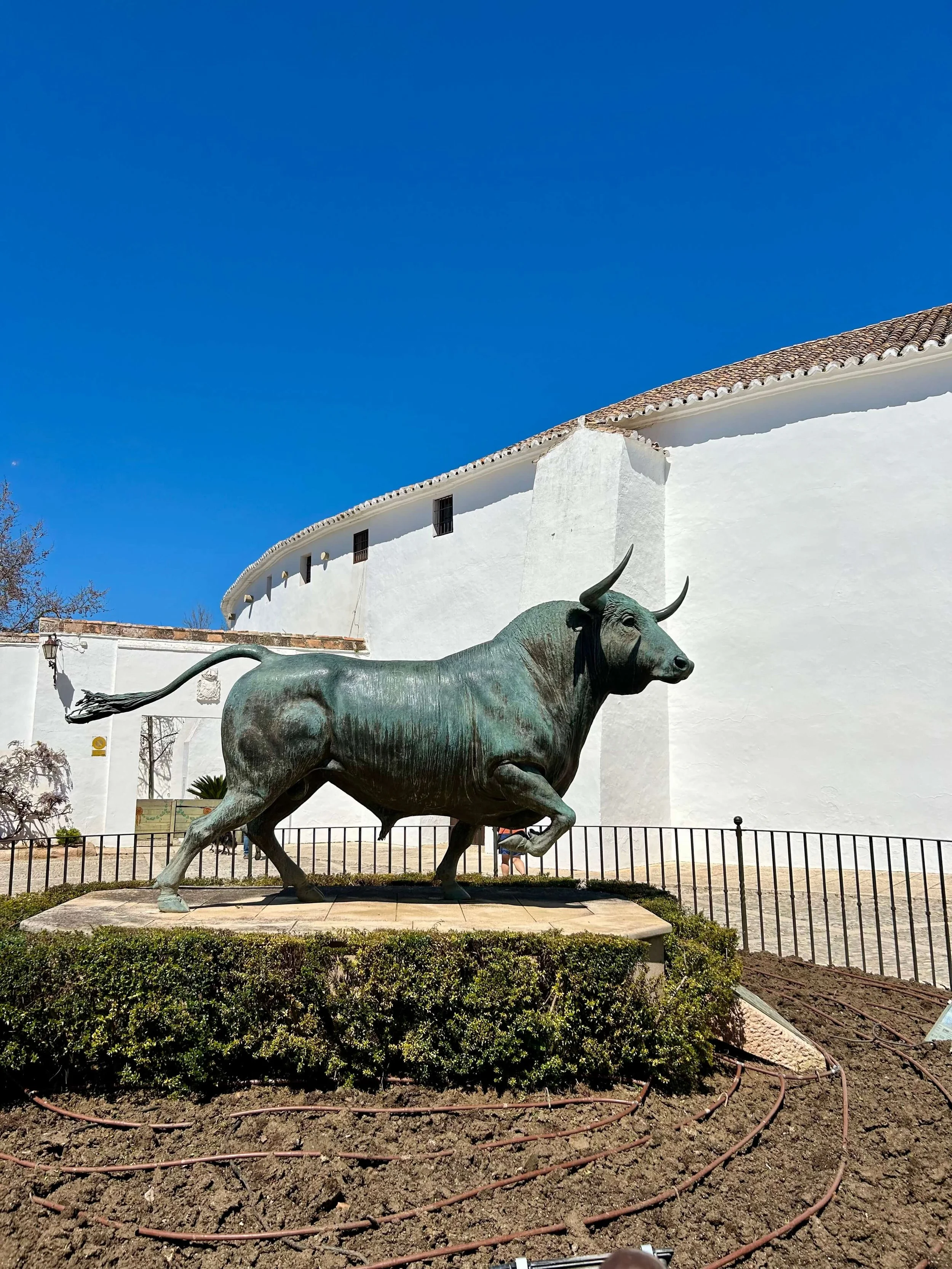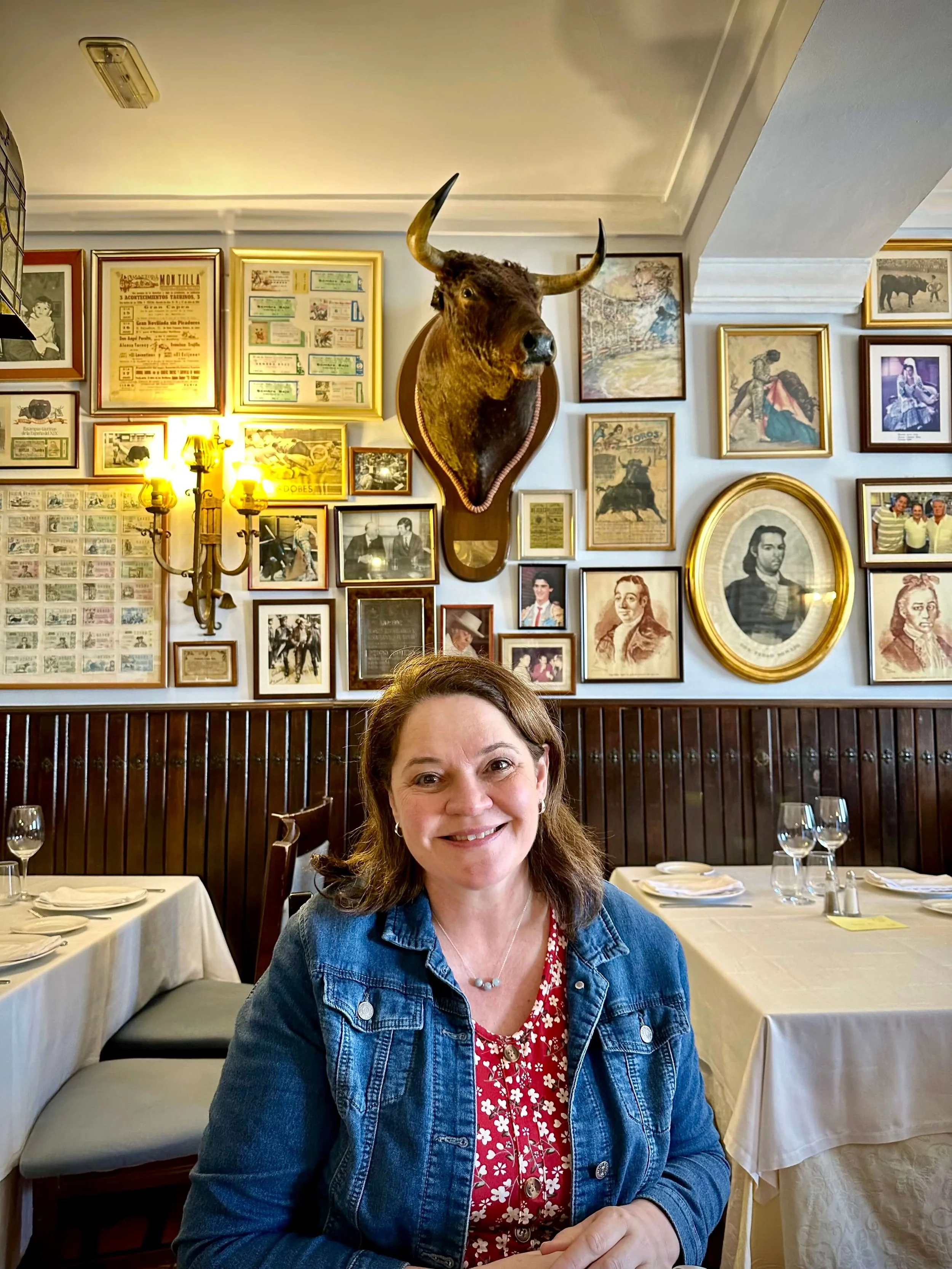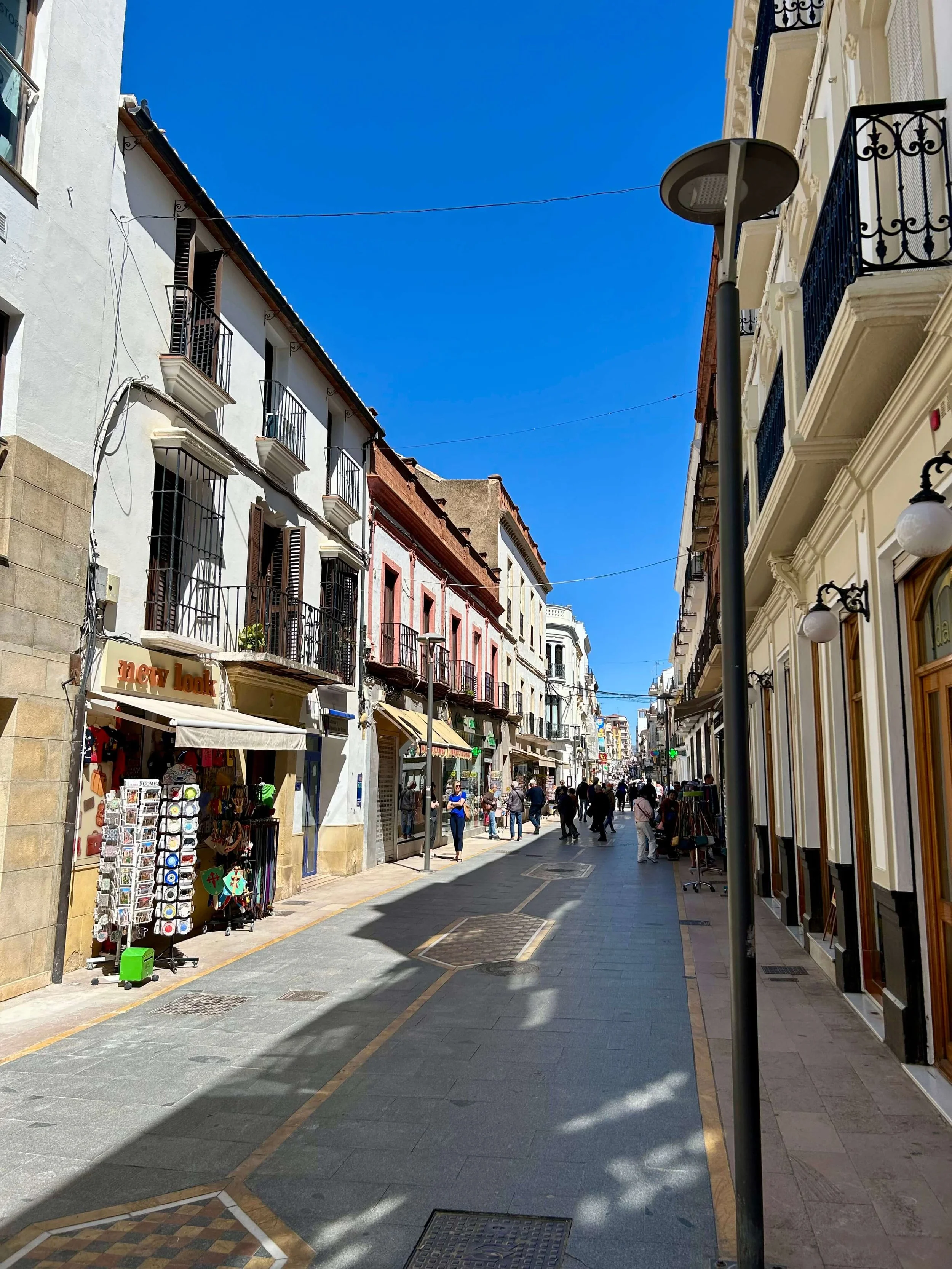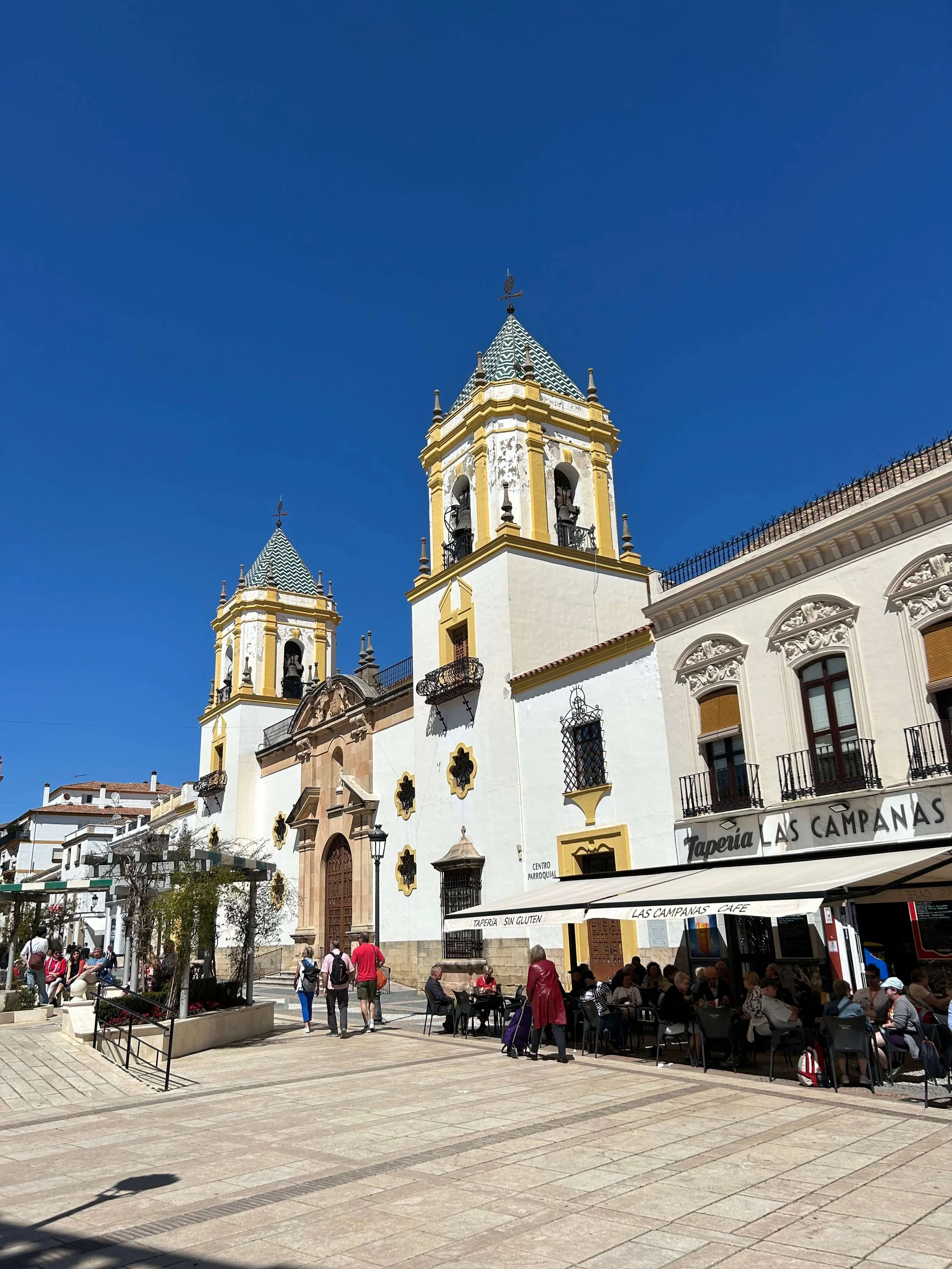Ronda Travel Guide: What to See, Eat, and Explore in a Day
Puente Nuevo in Ronda Spain
Some places stay with you long after you leave.
For me, Ronda is one of them.
We visited on a private day trip from Marriott’s Marbella Beach Resort. The original road to from Marbella Ronda had been washed out from recent rains, so our guide Francisco from Indiana Natura (we highly recommend them!) took a longer, scenic route that led us through Setenil de las Bodegas (another stop I’ll never forget). By the time we reached Ronda, the day already felt full of quiet magic.
Ronda is one of the oldest towns in Spain, built along a dramatic gorge that splits the city in two. When we arrived, we walked straight to Puente Nuevo—the “new” bridge that’s been standing since 1793. Photos don’t quite capture the feeling of seeing it in person. The bridge rises from the rock with this kind of grounded strength, connecting centuries of history. Below, the El Tajo gorge stretches over 300 feet deep, with olive trees, cliffs, and whitewashed homes tucked into every ledge.
Olive trees and Spain’s natural beauty
Next, we walked over to Ronda’s Plaza de Toros, one of the oldest bullfighting rings in Spain. Built in the 18th century, it’s stunning architecture features curved arches, golden light, a peaceful courtyard. But being there stirred some mixed emotions. It holds so much history and tradition, but also carries the weight of a practice I’ve always felt uneasy about. It reminded me that travel asks us to witness, not resolve.
There is also a museum on-site and a nice gift shop where I found a wonderful tapas cookbook that I can’t wait to try at home.
Ronda’s Plaza de Toros
For lunch, we ate at Restaurante Pedro Romero, named after one of Spain’s most legendary bullfighters. The restaurant feels like part museum, part family gathering space. The walls are lined with old photographs and memorabilia that trace Ronda’s cultural roots. We ordered a fresh tomato salad, their signature “Rabo de toro” (braised oxtail), and a cold glass of sangria as we watched people stop at Plaza del Toros across the street.
Restaurante Pedro Romero in Ronda
After lunch, we wandered through Calle Espinel, the town’s main shopping street. I picked up several small bottles of local olive oil. We finished our day with ice cream in the sun—simple, perfect.
Calle Espinel
Ronda, Spain
Driving back to Marbella, I felt that familiar blend of full and quiet. Between the landscapes, the stories about life in Spain from our amazing tour guide Francisco, and the slow meals, the day left a lasting imprint.
Join us for a tour of Ronda, Spain
If You Go:
Distance: Ronda is about 1 hour and 45 minutes from Marbella (longer if taking the alternate route)
Highlights: Puente Nuevo, Plaza de Toros, Calle Espinel, local restaurants
Tour: We highly recommend a private guide if you want deeper context and less stress—Francisco from Indiana Natura was fantastic
Tip: Wear comfortable shoes, and bring your camera—the views are everywhere
You might also enjoy these articles:
Marriott Marbella Beach Resort: Our Southern Spain Adventure
Wandering Marbella’s Old Town: From Cobblestone Streets to Boho Boutiques
Have you ever visited a place that stayed with you long after you left? I’d love to hear about it in the comments below.

